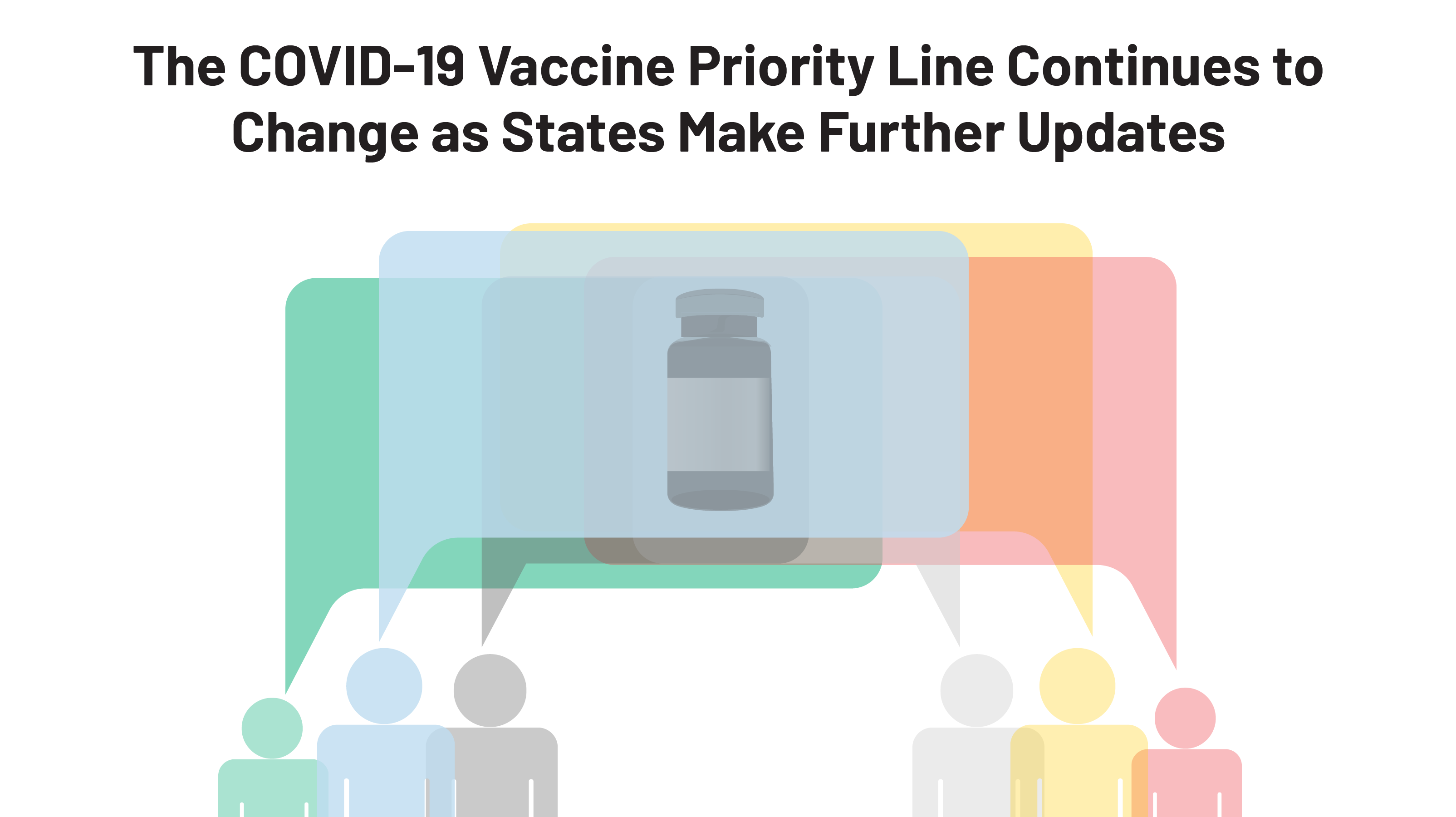The COVID-19 vaccine rollout has stumbled in much of the country, with uneven experience across states and many doses going unused. Meanwhile, with the death toll rising and concern increasing about new variants of the virus, there is new urgency to get more people vaccinated.
Drew Altman wrote recently in The Washington Post, a “much simpler plan” based on age could improve distribution. President Biden has said he would encourage states to vaccinate those ages 65 and older. And, on January 12, 2021, as one of the last COVID-19 actions of the Trump administration, the Department of Health and Human Services issued new guidance to states recommending they open vaccine availability to all people ages 65 and older and to those under 65 with high-risk medical conditions. This latest recommendation differed from CDC Advisory Committee on Immunization Practices (ACIP) recommendations issued in December 2020, that called for targeting limited vaccine doses to health care workers and long-term care facility residents in phase 1a and people over age 75 and frontline essential workers in phase 1b. Most states had initially followed the ACIP guidelines.
We assessed how states are changing vaccination plans by comparing prioritization groups on January 19 to those that were in place on January 11. Many states have, in fact, moved to redefine their priority populations or open vaccine availability to people 65 and older; a smaller number moved those under age 65 with high risk medical conditions up in line:
- As of January 19th, 28 states include people ages 65 and older in their phase 1a or 1b priority groups, up from 16 on January 11th. The 12 states that moved those 65+ up in line were Idaho, Maine, Mississippi, Nebraska, New Hampshire, New Jersey, New York, North Carolina, Oregon, Pennsylvania, Virginia and Washington.
- A total of 19 states include younger adults with high-risk medical conditions in phase 1a or 1b, including 6 states (Maine, Mississippi, Nebraska, New Jersey, Pennsylvania, and Virginia) that have revised their plans since January 11th.
- States continue to operate on different timelines, depending on how large their priority groups are, their capacity to vaccinate, and vaccine supply. Of the 28 states that include those 65+ in phase 1a or 1b, only 15 states are currently registering them for the vaccine (and in several of these states, there are long waits to get a vaccine appointment). In the 19 states that include high-risk younger adults, only 10 have opened eligibility to this group.
- In some cases, who is eligible or who can make an appointment to get vaccinated varies within states by county and even by health system within counties.
- While states did not make other broad changes to their phase 1a and 1b priority groups, by moving others into the same group or, in some cases, ahead of existing groups through further sub-prioritization, the timeline to receive a vaccine for many—particularly frontline workers—will likely be extended.
Even as some states broaden and simplify the priority groups eligible for COVID-19 vaccination based on new federal guidance, they face the challenge of communicating these changes to an anxious public. And, while expanding who is eligible to receive the vaccine may help to accelerate the pace in some cases, the limited supply of vaccine means many who are now eligible will continue to wait in line for an extended period of time.

